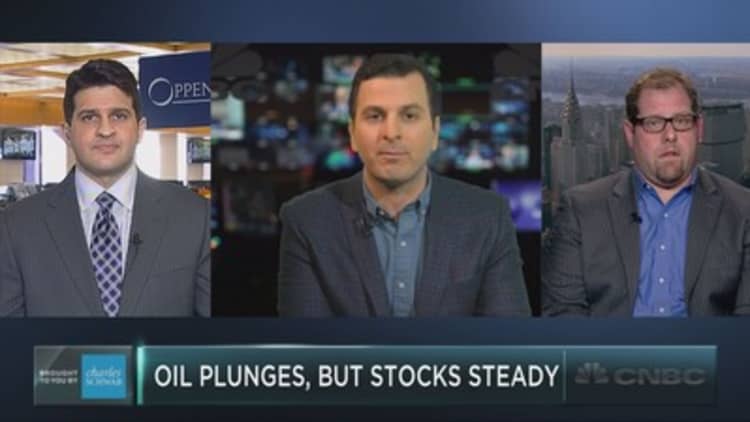Oil skidded again on Friday, pushing prices to three-month lows as investors continued to flee bullish positions on worries that OPEC-led production cuts have not yet reduced a global glut of crude.
U.S. crude has slumped about 9 percent since Tuesday's close, marking its biggest three-day decline since February, 2016.
U.S. crude ended Friday's session down 79 cents, or 1.6 percent, at $48.49 a barrel. Brent crude oil fell 91 cents, or 1.7 percent, to $51.28 a barrel by 2:37 p.m. ET (1937 GMT) .
Selling appeared to accelerate in the afternoon after U.S. crude fell through the 200-day moving average of $48.68 a barrel.
Prices began to slide earlier this week, after news of another big rise in U.S. crude inventories to record highs. On Friday, oil services firm Baker Hughes reported another weekly increase in the U.S. drilling rig count.

"We have not seen production cuts undertaken by the world's producers really alleviate the overhang in inventories," said Gene McGillian, manager of market research at Tradition Energy in Stamford, Connecticut.
On Thursday, U.S. crude tumbled below $50 a barrel for the first time since December, raising alarm among major oil producers like Saudi Arabia and United Arab Emirates.
U.S. oil and gas drilling has picked up, with producers planning to expand production in North Dakota, Oklahoma and other shale regions, while output has jumped in the Permian, America's largest oilfield.
U.S. drillers added eight rigs in the latest week, lifting the rig count to 617, its highest since September of 2015, Baker Hughes said.
Senior Saudi officials told U.S. oil companies in a closed-door meeting they should not assume OPEC would extend output curbs to offset rising U.S. production, industry sources told Reuters on Thursday.
Separately, Suhail bin Mohammed al-Mazrouei, energy minister for the United Arab Emirates, told Reuters this week the rise in U.S. inventories was a "worry," and that "investors need to be cautious not to bring so much production on line."

That has cast doubt on how long OPEC will be willing to cut output if prices keep falling. Ministers from Saudi Arabia and Iraq said this week at an energy conference in Houston that it was too early to consider whether cuts would be extended beyond June.
The Organization of the Petroleum Exporting Countries and other exporters including Russia agreed last year to cut output by around 1.8 million barrels per day in the first half of 2017, but so far the move has had little impact on inventory levels.
"To the extent that people are concerned that OPEC decides not to extend, you have a real concern about downside weakness, where breaking back below $40 a barrel I don't think is out of the question," said Tony Scott, managing director of analytics at BTU Analytics in Denver.
U.S. crude inventories swelled 8.2 million barrels last week to a record 528.4 million barrels.
Morgan Stanley analysts said in a note to clients they still thought Brent crude would end this year higher, at around $62.50.
However, they also said gains that followed the OPEC deal could be unwound due to weak gasoline demand, more drilling and heavy long positions. Futures positioning figures will be released Friday afternoon. Last week's data still showed strong bullish sentiment although crude longs edged off record levels.

